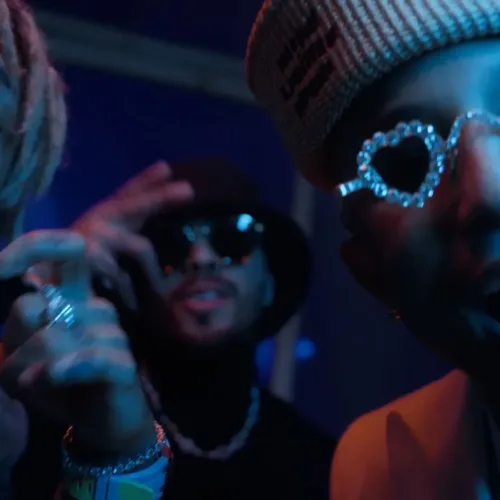Latin America is perhaps most recognized worldwide for its warm climate, vast rainforests and jungles, beautiful beaches, and humid temperatures. However, outside perspectives tend to forget that there are some of the world’s tallest snowy mountains and best ski resorts in the southernmost parts of the region and where the 4,500 miles of Andes Mountains stretch. For example, the slopes of Chile and Argentina provide miles and miles of ideal skiing conditions. And in Chile, the slopes are relatively close to the nation’s capital of Santiago, making these sports ever more accessible to the population. Still, Latinos have a relatively small presence at the Winter Olympics, the world’s biggest and most dramatic stage for winter sports.
The first-ever Winter Olympics was hosted in the French Alps in 1924, with athletes from all over the world demonstrating their skills in the most popular winter sports. Yet, Latin American countries were conspicuously missing from the lineup. It wasn’t until the second games, hosted in Switzerland, that Argentina and Mexico submitted their bobsled teams, marking the beginning of years of participation by Latino athletes in the games.
Slowly but surely, athletes from different countries have entered the competition. And while Latino athletes have certainly made their presence known at the games, no Latin American country has ever won a medal at the Winter Games.
Nevertheless, Latino athletes have made significant headlines, particularly with their bobsled teams. The stories have touched the hearts of many, probably because bobsledding seems like an unlikely sport for these athletes to pick up. What’s more, while the region certainly has conditions that accommodate skiing, bobsledding is harder to come by.
Most famously, the Jamaican bobsled team that competed in the 1988 Winter Olympics had a particularly inspiring story that got turned into the hit Disney movie “Cool Runnings.” But there was another team hailing from a warm-weather country that beat the odds and fought for their love of bobsledding. The Tames brothers, five men from Mexico, also competed at the games that year. The brothers grew up watching bobsled teams race at tremendous speeds and fell in love with the sport.
Bobsledding wasn’t accessible in Mexico City, so they set off to raise the money necessary to take trips to Upstate New York and practice the sport, eventually qualifying for the Calgary games that year. After relocating to Dallas to make more money and have access to better practice facilities, the Tames brothers drove themselves to Canada — a journey that took 53 hours. They did not medal at the Olympics, but their show of athleticism and commitment to a sport that was so out of reach to them is proof of how even when it feels unlikely and unattainable, Latinos can compete in these sports at the highest level.
While bobsled teams have made headlines, arguably the most popular sport at the Winter Games is skiing. Costa Rica was one of the early Latin American nations to participate, sending Arturo Kinch to the 1980 Winter Olympics in Lake Placid, New York. Kinch has since competed at three other Winter Olympics, never winning a medal.
Over the years, the region has sent more and more athletes to the games. Finally, at the 2014 Sochi Games in Russia, we saw the largest delegation from the region yet. With 40 athletes from 13 Latin American countries competing in all sorts of skiing and bobsledding events, the region had some historic showings at these games.
Some nations, like Venezuela, have only ever sent one athlete. The first and only competitor from the nation, Antonio Pardo, made his debut at the 2014 Sochi Games. First, the 43-year-old had to establish a ski federation, of which he made himself president and then moved to Argentina to pursue training. A video of him walking as the only athlete for his nation at the opening ceremony went viral on social media that year.
Other nations, like Puerto Rico, have outsourced talent from other countries to participate under their name. Charles Flaherty, who first competed for Puerto Rico in 2018 in alpine skiing, is one of the athletes the country recruited. His love for skiing grew from a place of necessity. The athlete’s younger brother William suffered from a life-threatening immunodeficiency disorder called hemophagocytic lymphohistiocytosis. When Flaherty was seven, he had to donate bone marrow to his younger brother to help with his treatment.
Flaherty’s family moved to Puerto Rico when he was eight, around the same time that they discovered skiing could be an effective therapy for William, allowing him to move his body and strengthen his bones. From there, the brothers began to take the sport more seriously, paving the way to Flaherty’s Olympic debut. Remarkably, Flaherty’s brother William will be competing for Puerto Rico in this year’s Olympics.
Outside of the region’s countries, Team USA also has had several notable Latino athletes. The first Latino to ever represent Team USA at the Winter Olympics was in 1956. Catherine “Cathy” Machado Gray ice skated in the games and subsequently made history. Machado spent her entire life ice skating, perfecting her craft and eventually making her way to the Olympics. She is a two-time U.S. bronze medalist and was inducted into the Figure Skating Hall of Fame in 2005.
Latinos have defeated the odds and made their way onto the Olympic stage with a passion for winter sports. And while the region might not be rampant with gold, silver, or even bronze winter Olympic medals yet, Latinos have been able to get their names on the roster at the most competitive winter sports competition in the world. And hey, animo, the possibility of winning a medal is always a motivator to get more Latinos to pursue these sports and compete at the games. So those who watched this year’s Olympics and wondered if they could one day compete should look at these stories for inspiration and examples of how hard work and dedication can lead one to surpass expectations.








